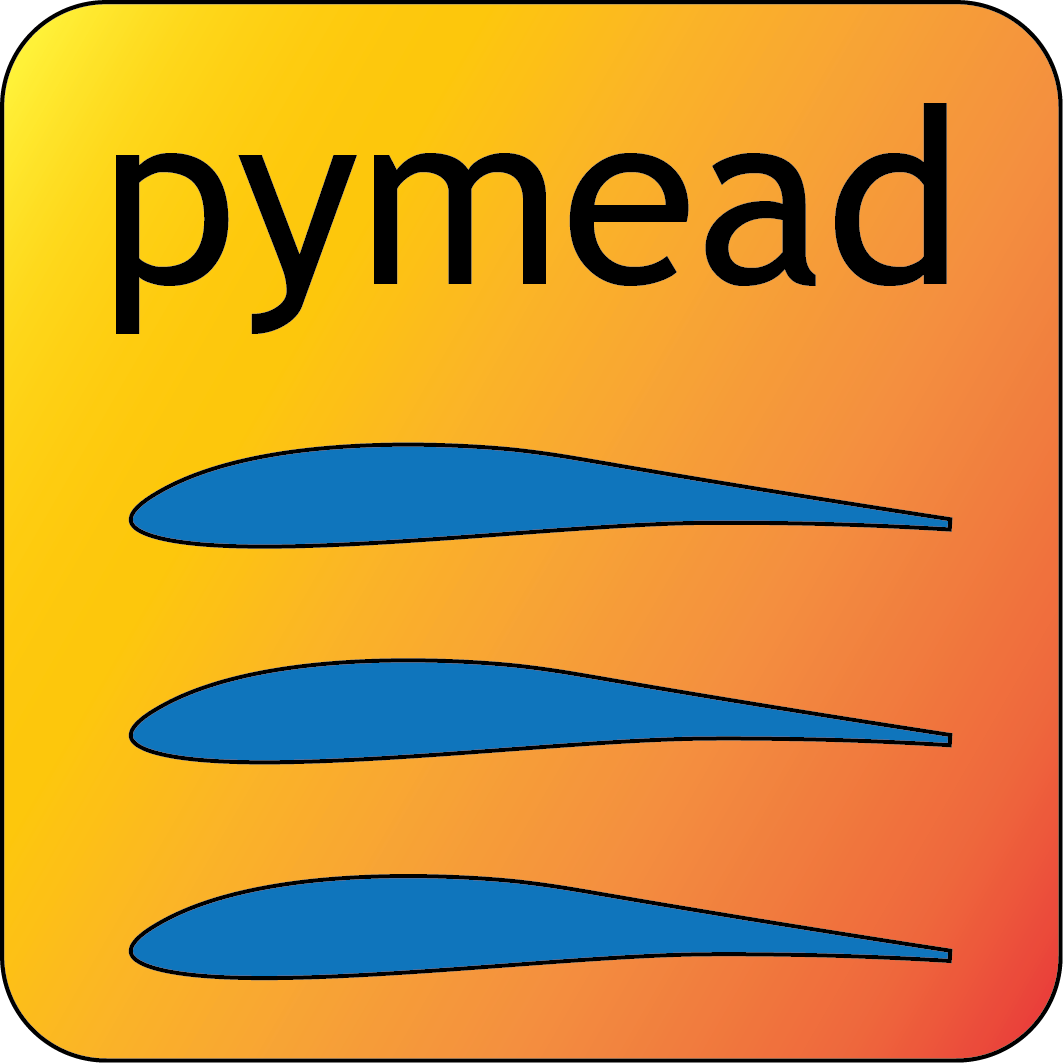Overview#
The graphical user interface in pymead has several components, each of which has a unique role.
Elements of the pymead GUI#
Elements of the pymead GUI#
The Title Bar shows the name of the currently loaded
.jmeafile (the JSON-based storage formats for geometry collections in pymead.The Menu Bar houses most of the actions available in pymead, including file loading/importing/saving, aerodynamic analysis tools, and optimization commands.
The Toolbar contains some of the most frequently used actions in pymead, including the buttons for geometry object creation.
The Parameter Tree houses a nested list of all the geometric objects presently loaded, regardless of whether they are visible in the geometry canvas.
The Geometry Canvas contains a visible representation of all the geometric objects, including, points, lines, curves, and airfoils. The canvas is interactive and allows for the typical pan/zoom actions (use View → Fit to see everything on the screen at once).
Directly underneath the geometry canvas are the tabs that can be used to access the Analysis Windows. These windows appear when aerodynamic analyses or shape optimization studies are run using XFOIL or MSES (see the Analysis and Optimization items in the menu bar).
The Console contains important output information from analyses and optimization runs. All text from the console can be selected with Ctrl+A and copied with Ctrl+C.
The Status Bar shows various tool tips, as well as live information during optimization runs. The status bar also contains a drop-down menu for inviscid lift coefficient analysis of airfoils that can be selected when there are one or more airfoils present in the geometry collection. Finally, the version of pymead in use is shown in the bottom right-hand corner.
The pymead GUI is fully customizable; the parameter tree, console, geometry canvas, and analysis windows can all be arranged according to preference, or even undocked to form separate windows. To re-arrange the windows, left-click and drag the top of the widget, near where the title of the widget is shown (e.g., “Tree”). To undock, drag the widget outside of the GUI. To redock, drag the widget back inside the GUI. The widgets can also be stretched or shrunk by left-clicking and dragging the widget dividers (the small sets of six dots between the widgets).

Customization of the pymead GUI#

Customization of the pymead GUI#
